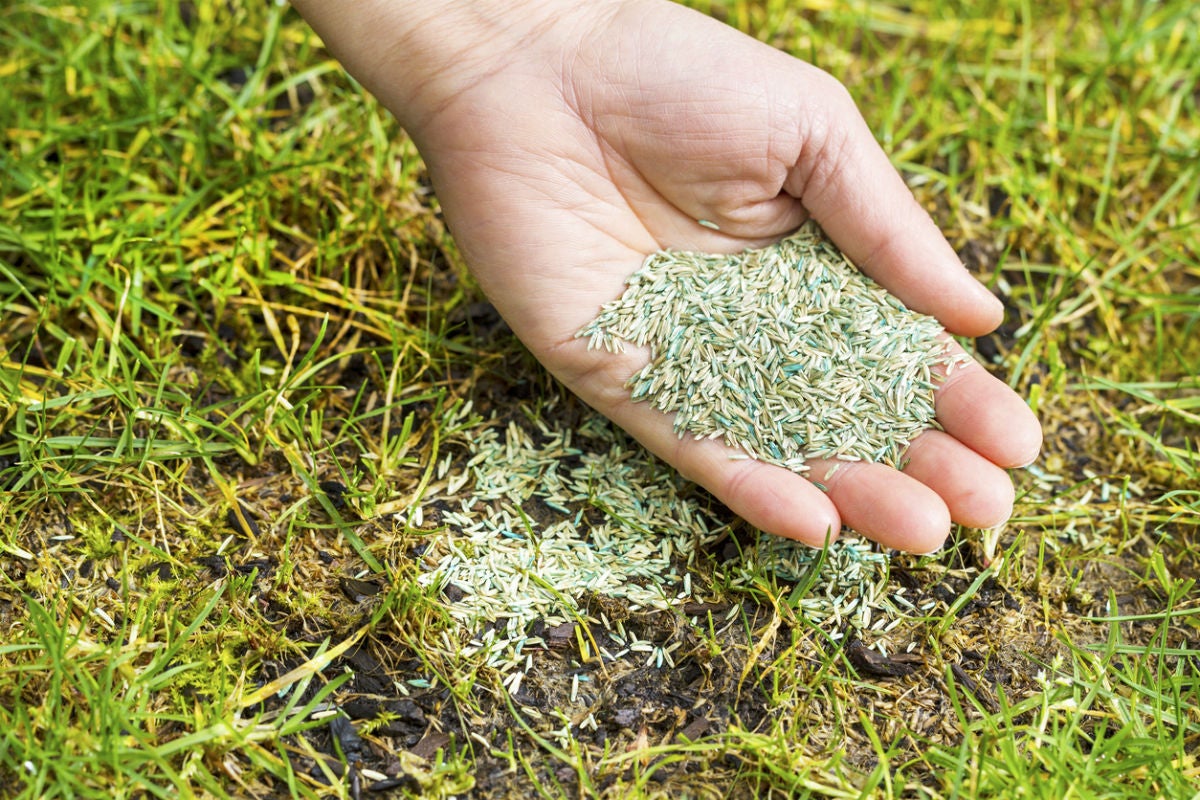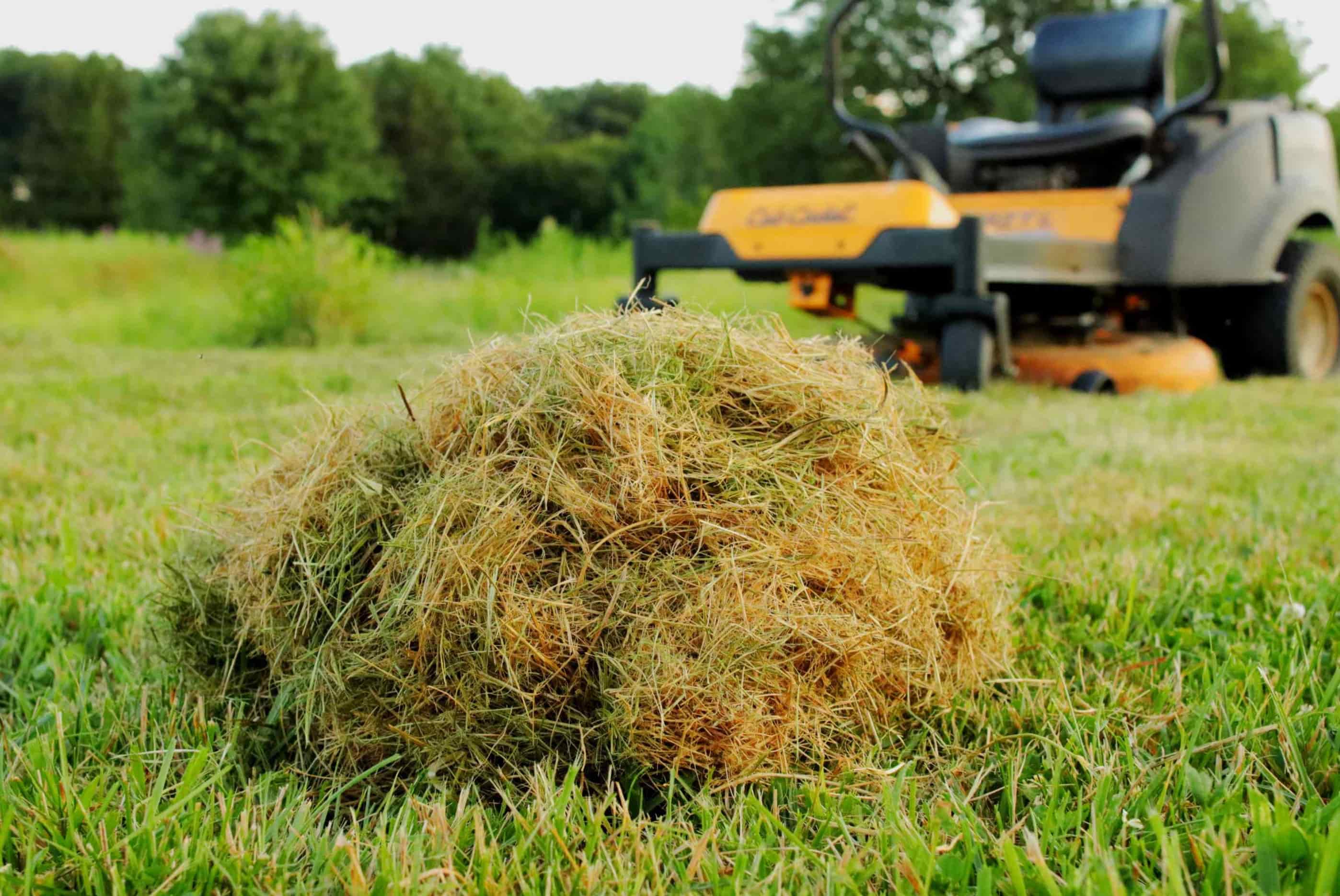Home>Gardening & Outdoor>Landscaping Ideas>How To Pick Grass Seed


Landscaping Ideas
How To Pick Grass Seed
Published: January 25, 2024
Learn how to choose the best grass seed for your landscaping project. Our expert tips will help you create a lush and healthy lawn. Discover the right seeds for your needs.
(Many of the links in this article redirect to a specific reviewed product. Your purchase of these products through affiliate links helps to generate commission for Storables.com, at no extra cost. Learn more)
Introduction
Are you dreaming of a lush, green lawn that beckons you to kick off your shoes and revel in its softness? The key to achieving this idyllic vision lies in selecting the perfect grass seed for your lawn. However, with a myriad of options available, the task can seem daunting. Fear not, as I am here to guide you through the process of choosing the ideal grass seed tailored to your specific needs and environment.
In this comprehensive guide, we will delve into the crucial factors to consider when picking grass seed. From understanding your soil and climate to selecting the best grass type and seed mixture, we will cover every aspect to ensure that you make an informed decision. Additionally, we will explore the essential maintenance and care considerations to help you nurture your chosen grass seed to its full potential.
Embark on this journey with me as we unlock the secrets to a vibrant and resilient lawn that will be the envy of the neighborhood. Let's dive into the fascinating world of grass seed selection and transform your outdoor space into a verdant oasis.
Key Takeaways:
- Understanding your soil and climate is crucial for choosing the right grass seed. Factors like soil type, climate, and sunlight exposure help you pick a grass variety that will thrive in your specific environment.
- Selecting the best seed mixture and implementing proper maintenance and care practices are essential for nurturing a vibrant, resilient lawn. Consider factors like grass species, watering, fertilization, mowing, and pest control to ensure your lawn flourishes.
Read more: How To Pick Up Acorns From The Grass
Understanding Your Soil and Climate
Before delving into the myriad of grass seed options, it is imperative to comprehend the unique characteristics of your soil and the climate in your region. These factors play a pivotal role in determining the type of grass seed that will thrive in your lawn.
Firstly, assess your soil type. Is it predominantly clay, sandy, or loamy? The texture and composition of your soil influence its drainage capabilities and nutrient retention. For instance, clay soil tends to retain water and nutrients, making it fertile but slow to drain, while sandy soil drains quickly but requires more frequent watering and fertilization. Understanding your soil type will help you select a grass variety that can adapt to its specific attributes.
Next, consider the climate in your area. Is it characterized by scorching summers, frigid winters, or a moderate, temperate climate? Different grass species exhibit varying tolerances to temperature extremes, sunlight exposure, and precipitation levels. For instance, cool-season grasses such as Kentucky bluegrass and fescue thrive in regions with distinct seasons, while warm-season grasses like Bermuda grass and Zoysia grass are better suited to hot, arid climates.
It is also essential to factor in the sun and shade patterns in your yard. Some areas may receive ample sunlight throughout the day, while others may be shaded by trees or structures. Understanding these light variations will enable you to select grass seed varieties that are tailored to the specific light conditions in different areas of your lawn.
By gaining a comprehensive understanding of your soil composition, climate, and light exposure, you can narrow down the options and identify grass seed varieties that are well-suited to your unique environmental conditions. Armed with this knowledge, you are ready to embark on the next step: choosing the right grass type for your lawn.
Choosing the Right Grass Type
Once you have familiarized yourself with the soil and climate peculiarities of your region, the next crucial step is to select the appropriate grass type that aligns with these environmental factors. The choice of grass type significantly impacts the overall health and appearance of your lawn, making it essential to make an informed decision.
Cool-season grasses are well-suited to regions with distinct seasonal changes, thriving in cooler temperatures and exhibiting resilience in the face of frost and snow. Varieties such as Kentucky bluegrass, fescue, and ryegrass are popular choices for lawns in northern regions, where winters can be harsh and prolonged.
Conversely, warm-season grasses are tailored to thrive in hot, arid climates, making them ideal for lawns in southern regions. These grasses, including Bermuda grass, Zoysia grass, and St. Augustine grass, boast excellent heat tolerance and adaptability to drought conditions, ensuring that your lawn remains verdant and vibrant even during scorching summers.
Consider the specific attributes of each grass type, such as its growth pattern, maintenance requirements, and tolerance to foot traffic. For instance, Kentucky bluegrass is celebrated for its lush, dense growth and exceptional tolerance to heavy use, making it an excellent choice for high-traffic areas. On the other hand, Zoysia grass is prized for its drought resistance and low maintenance needs, making it an attractive option for homeowners seeking a resilient, low-maintenance lawn.
Furthermore, some grass types exhibit superior shade tolerance, thriving in areas with limited sunlight. If your lawn features shaded sections due to trees or structures, selecting a shade-tolerant grass type, such as fine fescue or certain varieties of Zoysia grass, can ensure uniform coverage and lush growth across all areas of your lawn.
By carefully evaluating the unique attributes and requirements of each grass type, you can make an informed decision that aligns with the specific needs of your lawn. With the ideal grass type selected, you are now poised to move on to the next step: selecting the best seed mixture that will bring your vision of a vibrant, resilient lawn to life.
When picking grass seed, consider the climate and soil type of your area. Choose a seed that is suitable for your region to ensure the best growth and health of your lawn.
Selecting the Best Seed Mixture
Choosing the best seed mixture is a critical step in the process of establishing a thriving, resilient lawn. Seed mixtures are carefully curated blends of different grass varieties, each offering unique attributes that contribute to the overall health and appearance of the lawn. By selecting a seed mixture that aligns with your specific requirements and environmental conditions, you can lay the foundation for a lush, vibrant lawn that will be the pride of your property.
When exploring seed mixtures, consider the composition of the blend in terms of grass species and varieties. A well-balanced seed mixture often combines different grass types to leverage their individual strengths, resulting in a lawn that exhibits resilience, uniform coverage, and adaptability to varying conditions. For instance, a blend of Kentucky bluegrass, perennial ryegrass, and fine fescue can offer a harmonious mix of lushness, durability, and shade tolerance, creating a visually appealing and robust lawn.
It is also essential to consider the specific attributes of the grass varieties within the seed mixture. Some varieties may excel in rapid germination, facilitating quick establishment and coverage, while others may boast superior drought resistance or exceptional tolerance to foot traffic. By understanding the unique strengths of each variety, you can tailor the seed mixture to address the specific needs of your lawn, ensuring that it thrives in its environment.
Furthermore, take into account any specialized requirements or challenges posed by your lawn, such as areas with poor soil drainage, intense sunlight exposure, or heavy foot traffic. Selecting a seed mixture that includes grass varieties with attributes that address these challenges can significantly enhance the resilience and longevity of your lawn.
Lastly, prioritize quality when selecting a seed mixture. Opt for reputable brands known for their high-quality seeds, as superior seed purity, germination rates, and genetic integrity can make a substantial difference in the success of your lawn establishment efforts. Investing in a premium seed mixture sets the stage for a vibrant, healthy lawn that will endure and enchant for years to come.
With the best seed mixture chosen, tailored to the specific needs and challenges of your lawn, you are now equipped to embark on the next step: considering the maintenance and care requirements that will nurture your chosen grass seed to its full potential.
Considering Maintenance and Care
As you embark on the journey of nurturing your chosen grass seed into a lush, verdant lawn, it is essential to consider the maintenance and care requirements that will ensure its optimal growth and longevity. By implementing a thoughtful care regimen and adhering to best practices, you can foster a resilient, vibrant lawn that becomes the centerpiece of your outdoor space.
One of the fundamental aspects of lawn care is watering. Understanding the watering needs of your grass seed is crucial, especially during the establishment phase. Adequate and consistent watering promotes robust root development and facilitates uniform germination, laying the groundwork for a healthy, thriving lawn. Consider factors such as soil drainage, sunlight exposure, and prevailing weather conditions when devising a watering schedule, ensuring that your lawn receives the moisture it requires to flourish.
Fertilization is another critical component of lawn maintenance. Selecting a high-quality fertilizer formulated for the specific needs of your grass type and soil composition can provide essential nutrients that bolster the health and resilience of your lawn. By adhering to a well-calibrated fertilization schedule, you can promote vigorous growth, vibrant coloration, and enhanced resistance to environmental stressors.
Regular mowing is essential for maintaining an attractive, well-groomed lawn. Adjust the mowing height based on the recommended guidelines for your grass type, ensuring that you do not remove more than one-third of the grass blade length in a single mowing session. This practice helps prevent stress on the grass and encourages healthy, dense growth that enhances the visual appeal of your lawn.
Furthermore, proactive weed control and pest management are vital aspects of lawn care. Implementing targeted strategies to prevent weed infestations and address pest issues can safeguard the health and vitality of your lawn, preserving its pristine appearance and minimizing competition for essential resources such as water, sunlight, and nutrients.
Aeration and dethatching are additional maintenance tasks that contribute to the overall well-being of your lawn. These practices promote optimal soil oxygenation, water infiltration, and root development, fostering a robust and resilient turf that thrives in its environment.
By considering these maintenance and care requirements and integrating them into your lawn care routine, you can provide the nurturing environment that your chosen grass seed needs to flourish. With meticulous attention to these essential practices, you are well-positioned to cultivate a vibrant, resilient lawn that will be a source of pride and enjoyment for years to come.
Read more: How To Pick Up Grass After Mowing
Conclusion
Congratulations on embarking on the enriching journey of selecting the perfect grass seed for your lawn. By delving into the intricacies of soil and climate assessment, choosing the right grass type, selecting the best seed mixture, and considering maintenance and care, you have gained invaluable insights into the art and science of nurturing a vibrant, resilient lawn.
As you navigate the process of choosing the ideal grass seed, remember that each step is an opportunity to craft a personalized outdoor oasis that reflects your unique preferences and the environmental nuances of your region. The thoughtful consideration of soil composition, climate patterns, and light exposure sets the stage for selecting a grass type and seed mixture that harmonizes with the distinctive attributes of your lawn.
Furthermore, the conscientious integration of maintenance and care practices ensures that your chosen grass seed receives the nurturing environment it needs to thrive. By embracing watering, fertilization, mowing, weed control, and other essential tasks, you are actively contributing to the development of a lush, resilient lawn that will be a source of joy and pride for years to come.
As you witness the transformation of your outdoor space into a verdant haven, take pleasure in the knowledge that your efforts are nurturing a living, breathing ecosystem that enriches the landscape and enhances the beauty of your property. The allure of a vibrant, resilient lawn extends far beyond aesthetics, creating a welcoming environment for leisure, recreation, and connection with nature.
Embrace the journey of cultivating your dream lawn with enthusiasm and dedication, knowing that each decision and action you take contributes to the creation of a captivating outdoor retreat. Your commitment to selecting the perfect grass seed and providing attentive care will yield a bountiful harvest of natural beauty, tranquility, and rejuvenation.
May your lawn flourish and thrive, becoming a testament to your passion for creating a harmonious coexistence between nature and human habitation. With each blade of grass that flourishes under your care, you are crafting a living tapestry that enriches the environment and elevates the spirit. As you revel in the splendor of your vibrant, resilient lawn, take pride in the transformative power of your dedication and stewardship.
Frequently Asked Questions about How To Pick Grass Seed
Was this page helpful?
At Storables.com, we guarantee accurate and reliable information. Our content, validated by Expert Board Contributors, is crafted following stringent Editorial Policies. We're committed to providing you with well-researched, expert-backed insights for all your informational needs.















0 thoughts on “How To Pick Grass Seed”